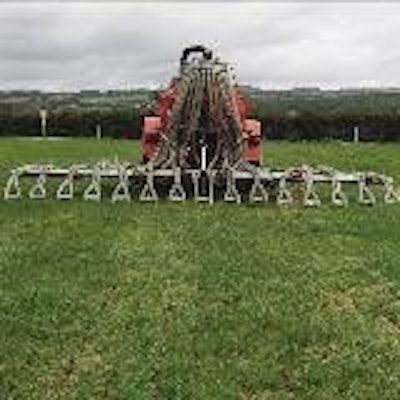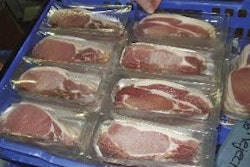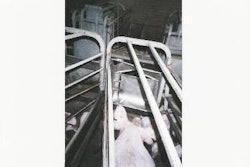
At times of financial pressure, it has become customary to look again at the unit's usage of feed and energy in order to increase efficiency and maximise the economic return. It can often seem difficult to economise on other inputs. However, the producer does have control over the amount of water used in pig manure and, therefore, the cost associated with its disposal.
This may not be regarded as an important consideration at first, but excess water usage on the unit is doubly expensive. In addition to the initial charge on the supply, there is the cost afterwards of transporting a larger volume of slurry.
Estimating slurry amounts
Several management factors can have an impact on water use and waste disposal, with some changes in practices potentially leading to more efficient control of these associated costs. We can start to put some numbers to the problem by calculating how much manure a unit produces, with and without wasting water. The least amount of raw slurry that a typical sow herd is likely to produce is calculated on the basis of the pigs' minimum daily requirement for drinking water, less metabolic losses, with the result expressed in litres per 100 sows and progeny in a breeding-finishing enterprise.
Additional water may also be required for washing and cleaning. The volume used will vary greatly between units depending on factors such as the structure and the system used.
French research published in 2003 showed a usage figure of 2 cubic metres of water per sow/year for washing and disinfecting a unit. Put that with the 12.8m³ of manure and the combined total volume from slurry and washing becomes 14.8m³ per sow/year, which would be a target minimum for a unit without taking account of any additional water from leakages or rainwater entering storage tanks.
Impact of wet feeding
In reality, the water usage per sow/year on units will vary from a low of 15m³ to a high of 25m³, due to a number of factors. These range from dietary levels of protein and salt to the ambient temperature, the unit's health status, whether its feed is presented as meal rather than pellets, the system used for washing pens and the water-to-feed ratio applied in any liquid feeding, as well as the fact of water leakages.
The ration between water and feed in wet feeding has a particularly significant effect on the volume of effluent produced. This is particularly relevant for the finishing house, as this is where nearly 50 percent of the unit's manure is produced.
An increase in the ratio from 2.5 to 3.5 will mean the volume of manure produced on a 500-sow integrated unit rising by 2,000m³.
Of course, the amount of manure dictates the expense involved in its handling, storage and disposal. A guide to the cost has been prepared recently in Ireland. It takes the example where the manure is delivered off-unit by a tractor and vacuum tanker.
Impact of water content
You can see how much the handling cost is affected when the water content in the manure rises, in this case dropping the drymatter value from 6 percent to 3 percent. The calculations suggest that a 50 percent reduction in total volume could save €55 per sow by allowing the delivery distances to be halved.
On an annualised basis this would save a 1,000-sow integrated unit about €55,000 per year, even before the saving made in water charges from the lower usage. So an important question for all pig enterprise operators is how to minimise water usage and therefore control excessive manure costs. A number of areas need to be examined. The first is to have some way of measuring the amount of water you use, which may mean installing a meter if the flow has not been metered previously. Amounts then need to be monitored on a regular basis. Remembering those factors that can influence water use, make sure the pigs' diets are formulated to avoid unnecessarily high protein and salt levels.
Review the water-to-feed ratio if using a wet-feed system. Maintain optimum housing temperatures. Consider changing to wet/dry feeders instead of having a dry feeder with a supplemental water source.
In addition, use less-waste drinkers for the grower and finisher pigs. Install a sprinkler system for cooling the pigs and for pre-soaking pens before washing. Use turbo nozzles on the power-washer when cleaning a pen.
Choose easily cleaned housing materials for pen floors and walls. Equally important, however, all leaks must be repaired quickly.
Controlling input costs
Implement these changes and you should gain more control over one of your major input costs. Having such a control opportunity is rare in the current economic climate for pig production, so it should be seized with both hands!



.jpg?auto=format%2Ccompress&fit=crop&h=167&q=70&w=250)













